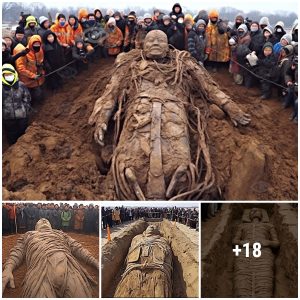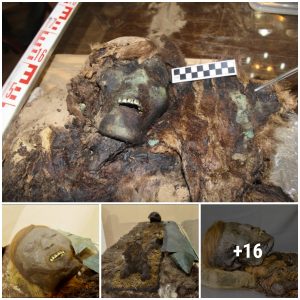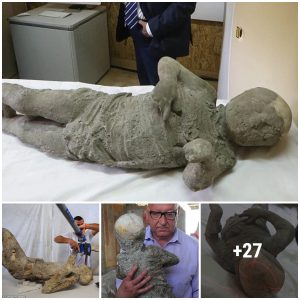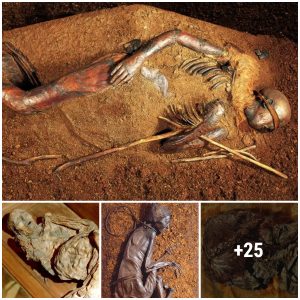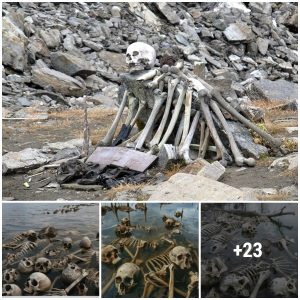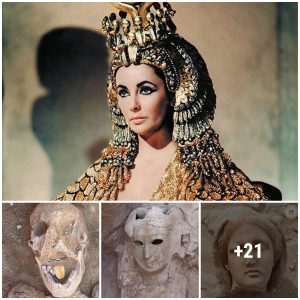When we hear the word “mummy”, the first thing that comes to mind is a mysterious Egyptian tomb full of winding secret passageways inside which, for all eternity, a bunch of mummies are hidden, resting in their decorated sarcophagi, surrounded by awesome treasures. But the Egyptians were not the only ones who mummified their deceased to help them achieve eternal life.
SOPHISTICATED MUMIFICATION TECHNIQUES

How the Guanches knew about these sophisticated mummification techniques remains a mystery to researchers.
After the Spanish conquest of the Canary Islands, there was a fact that powerfully called the attention of the first Spaniards who settled on the islands, specifically in Tenerife: the funeral customs of the Guanches, the local indigenous population, of Berber origin, who mummified their dead using very sophisticated techniques. Alfonso de Espinosa, a religious who observed the phenomenon, recorded it in writing: “The natives of this island, pious towards their deceased, had the custom that, when one of them died, they called certain men (if the deceased was male). ) or women (if she was a woman) who had this by trade and lived and supported themselves by this, who, taking the body of the deceased, after washing, poured certain confections through the mouth made of melted cattle lard, heather powder and of rough stone, pine bark and other I don’t know what herbs, and stuffed it with this every day, putting it alone, when from one side, when from the other, for a space of fifteen days, until it was dry and mirlado, which they called xaxo”. Apparently, the mummification was carried out by the so-called achicasnai, the lowest caste of the Guanche society, which was made up of tanners and butchers.
The Guanche mummy from the Barranco de Herques, found in 1776 west of Tenerife, belongs to the permanent collection of the National Archaeological Museum (MAN) in Madrid.
According to current radiocarbon studies carried out on the few surviving Guanche mummies, it seems that mummification took place in Tenerife between 400 and 1400 AD. The deceased were buried in caves, wrapped in goat skins and tied to wooden planks. Some carcasses have been documented that presented evisceration and others that did not. The evisceration was practiced through various slits –in the shoulders, neck, chest and abdomen–; then, the corpses were filled with sand, pinnace, gofio, tree bark and other substances. The environmental dryness that funerary caves enjoyed did the rest. Along with the mummy, a small funerary trousseau was arranged for his life in the Hereafter.
PLUNDER AND DESTRUCTION

Texts written by the Spanish settlers of the islands speak of visits to burial caves, some of which contained, according to estimates, up to a thousand bodies. But the numerous pillages that have occurred over the centuries have drastically reduced the number of preserved Guanche mummies. In 1933 one of these looting took place. A shepherd accidentally discovered a cave full of mummies, and once the news was known, thousands of people showed up at the scene and destroyed the seventy bodies that were buried there to take all kinds of bones, as if they were relics.
Today we can see Guanche mummies in the Museum of Nature and Man of Tenerife. Some of them, like the Necochea mummies, were looted and ended up in Argentina until 2003, the year they were returned. Among these bodies stand out that of a 20-year-old girl and a 25-year-old man, wrapped in leather shrouds made with precise seams. Another mummy that can be seen in the museum and that is very well preserved is the mummy of Saint Andrew, a man of about 30 years who was discovered in a cave placed on a wooden board and who kept his grave goods.
MODERN STUDY TECHNIQUES

The National Archaeological Museum of Madrid also preserves a Guanche mummy in a magnificent state of preservation. It is the one known as the Barranco de Herques mummy, which after being given to King Carlos III in the 18th century, passed to the Royal Cabinet of Natural History, from where it was taken to the National Museum of Anthropology. The long journey of the mummy from the Barranco de Herques ended in 2015, when it was transferred to the National Archaeological Museum, where today it can be seen in the room dedicated to Canarian Prehistory.
The Guanche mummy in the National Archaeological Museum is dated between the 11th and 13th centuries and corresponds to an adult man between 35 and 40 years old and 1.60 meters tall.
This mummy has recently been studied within the framework of the project The secrets of the MAN mummies, together with three Egyptian mummies that are also kept in the institution. Thanks to these investigations, it has been discovered that the mummy of the Barranco de Herques belongs to a man between 35 and 40 years old, 1.60 m tall and that, in addition to enjoying teeth in perfect condition, he had had a balanced diet and he had not carried out activities that had eroded his physical condition. The CT scan performed on the mummy also showed that he kept the viscera inside.

Mummy expert Jens Klocke examines a Guanche mummy at the Roemer-Pelizaeus Museum in Hildesheim, Germany, in December 2015.
There is no doubt that with modern scientific advances, the Guanche mummies will provide much information about the religious rituals and daily life of the ancient islanders, but understanding how they learned these sophisticated mummification techniques remains a challenge for now. the researchers.
Related video:
